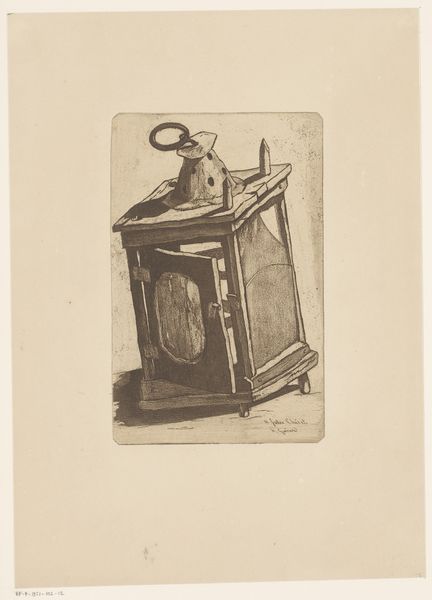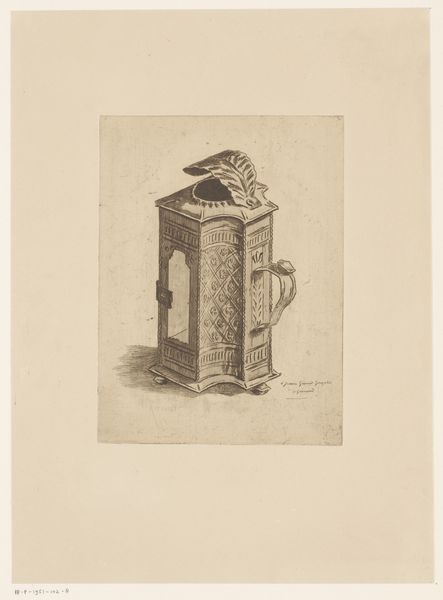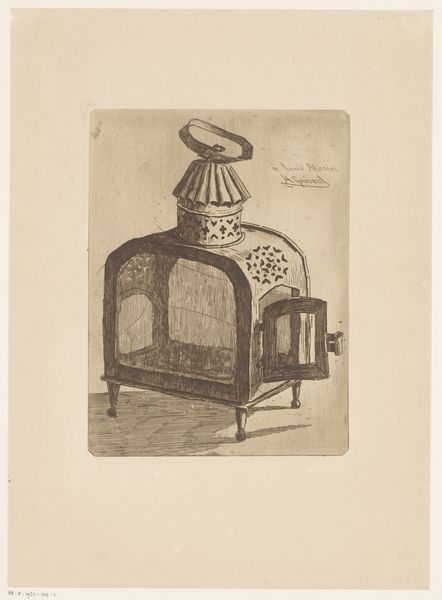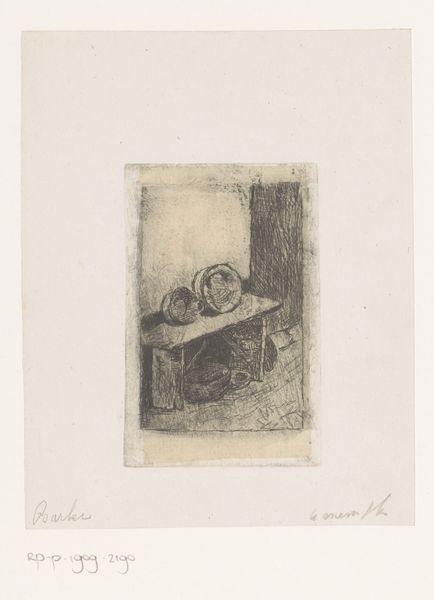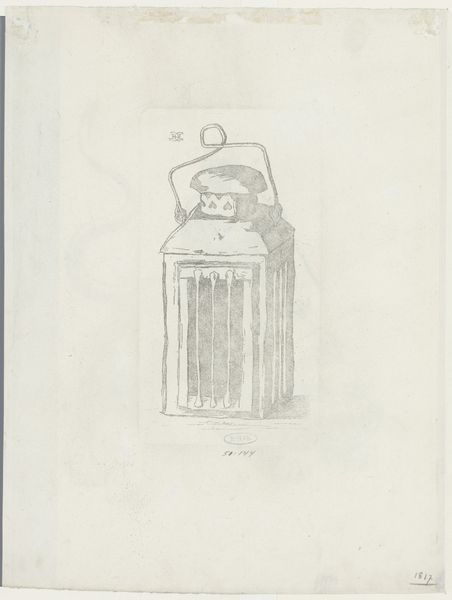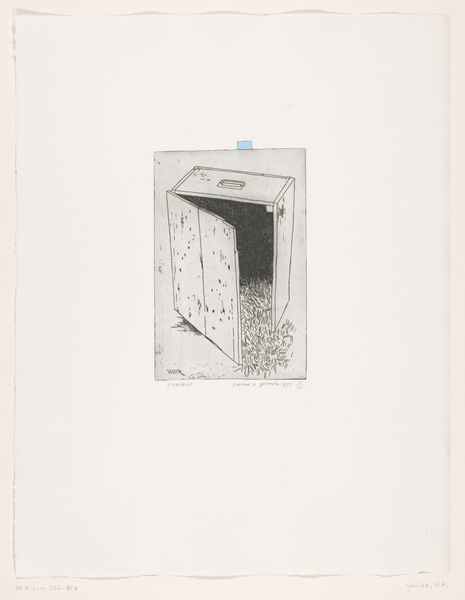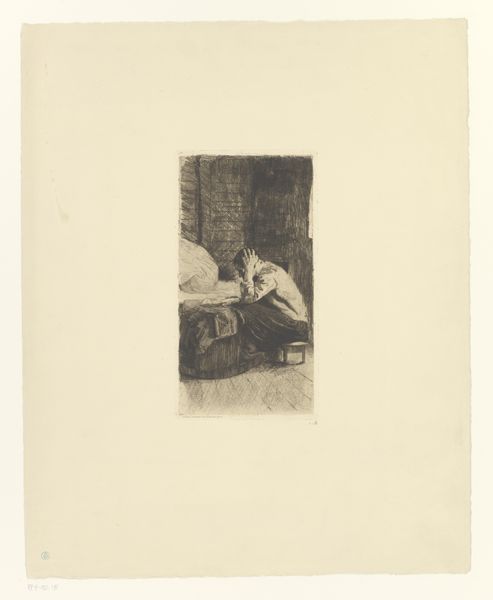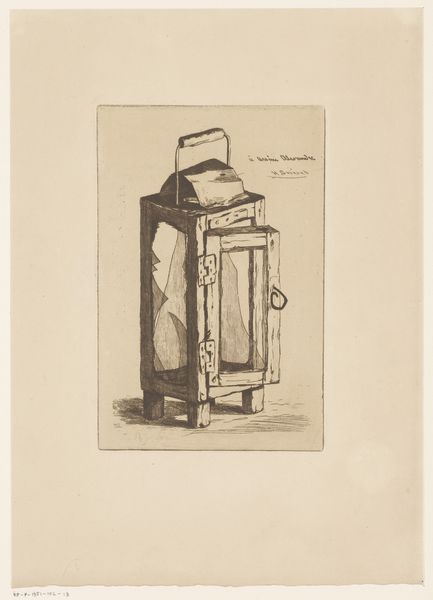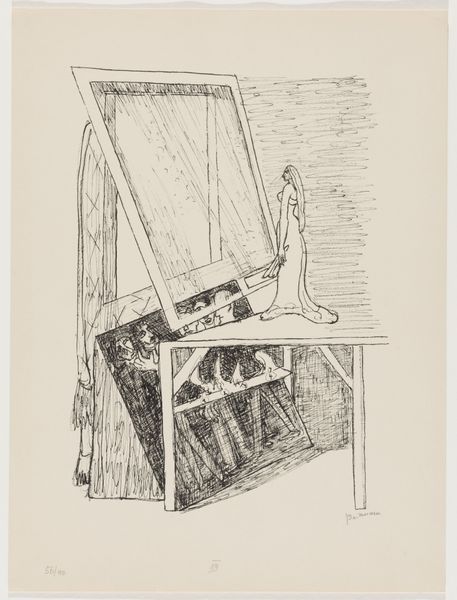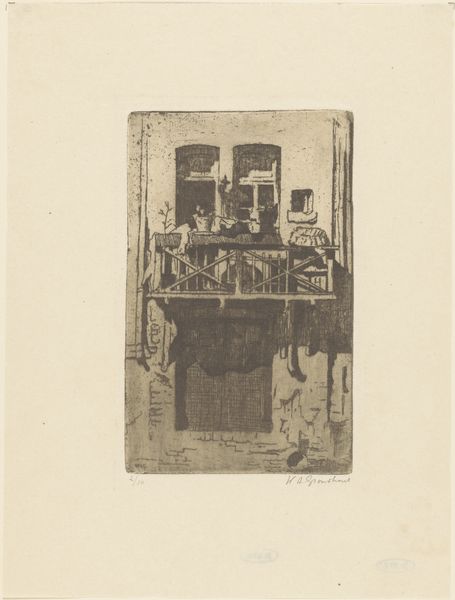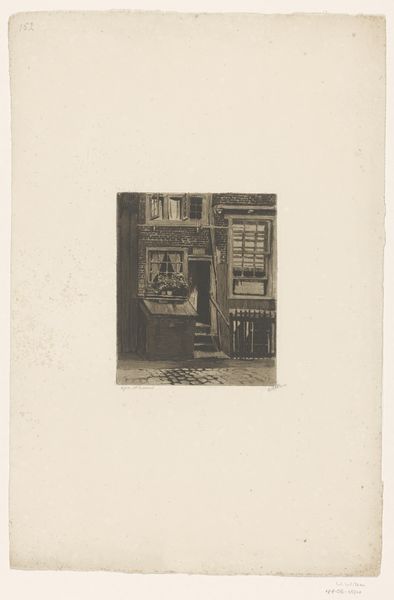
drawing, print, pencil
#
drawing
# print
#
pencil
Dimensions: height 195 mm, width 130 mm
Copyright: Rijks Museum: Open Domain
Editor: So, this is "Lantaarn" by Henri-Charles Guérard, created around 1876. It's a drawing and print using pencil, housed here at the Rijksmuseum. It's deceptively simple, but there is such precision in how he rendered the different textures of wood, the paper label, the delicate glass within... What catches your eye in this seemingly ordinary object? Curator: The formal elements are compelling. Consider the artist's deployment of hatching and cross-hatching to evoke the three-dimensionality of the lantern, its construction. The object becomes sculptural. Editor: So, the artistic skill elevates something mundane into art. Is that right? Curator: Precisely. Look at the geometric interplay—the rectangles of the lantern’s sides contrasted with the softer, curved lines of the handle. Notice too how the strategic use of light and shadow adds depth and visual interest, playing with contrasts. Does that make sense to you? Editor: Absolutely. The shadow cast from the bars on the side adds another layer, another pattern. Without it, the object would be flattened, not as interesting. I almost missed that it looked like one of the panes of glass in front is cracked. Curator: Good eye. And the broken pane… we cannot make easy symbolic inferences but appreciate its form as a break, if you will, within an otherwise carefully orchestrated structure. Its line disrupts the purity. A moment of disorder amidst order. Editor: I’m starting to see more in it than just a simple lantern now. I didn’t realize how much detail and attention Guérard put into showing its form. Curator: Indeed. This is a testament to the transformative power of artistic rendering itself. I will definitely reflect more on it and see other still-life representations through new eyes.
Comments
No comments
Be the first to comment and join the conversation on the ultimate creative platform.

